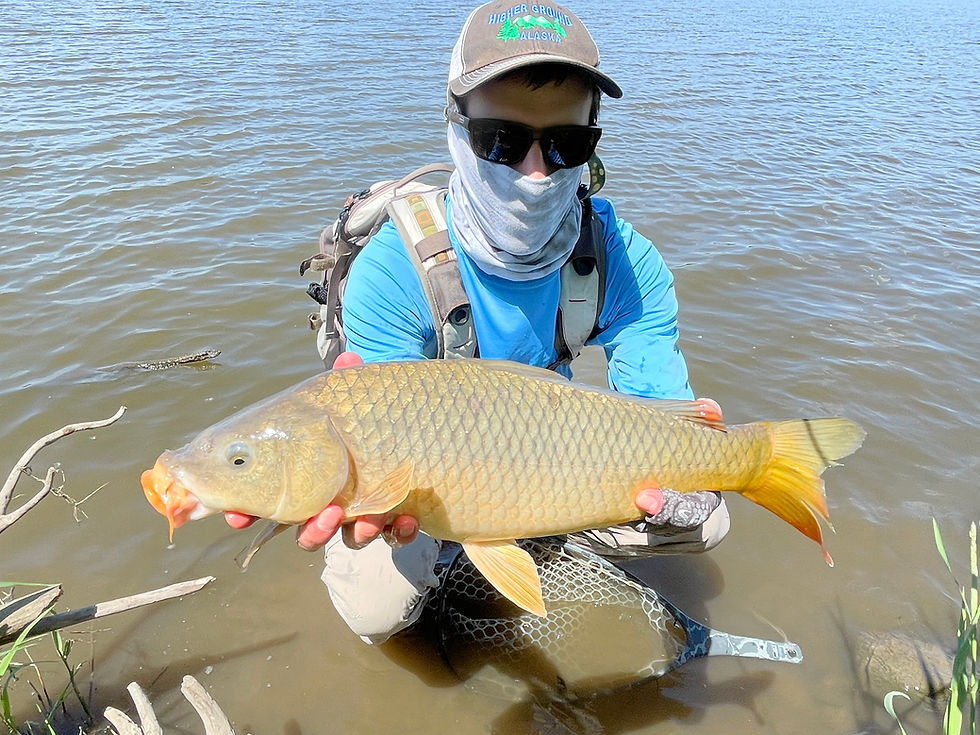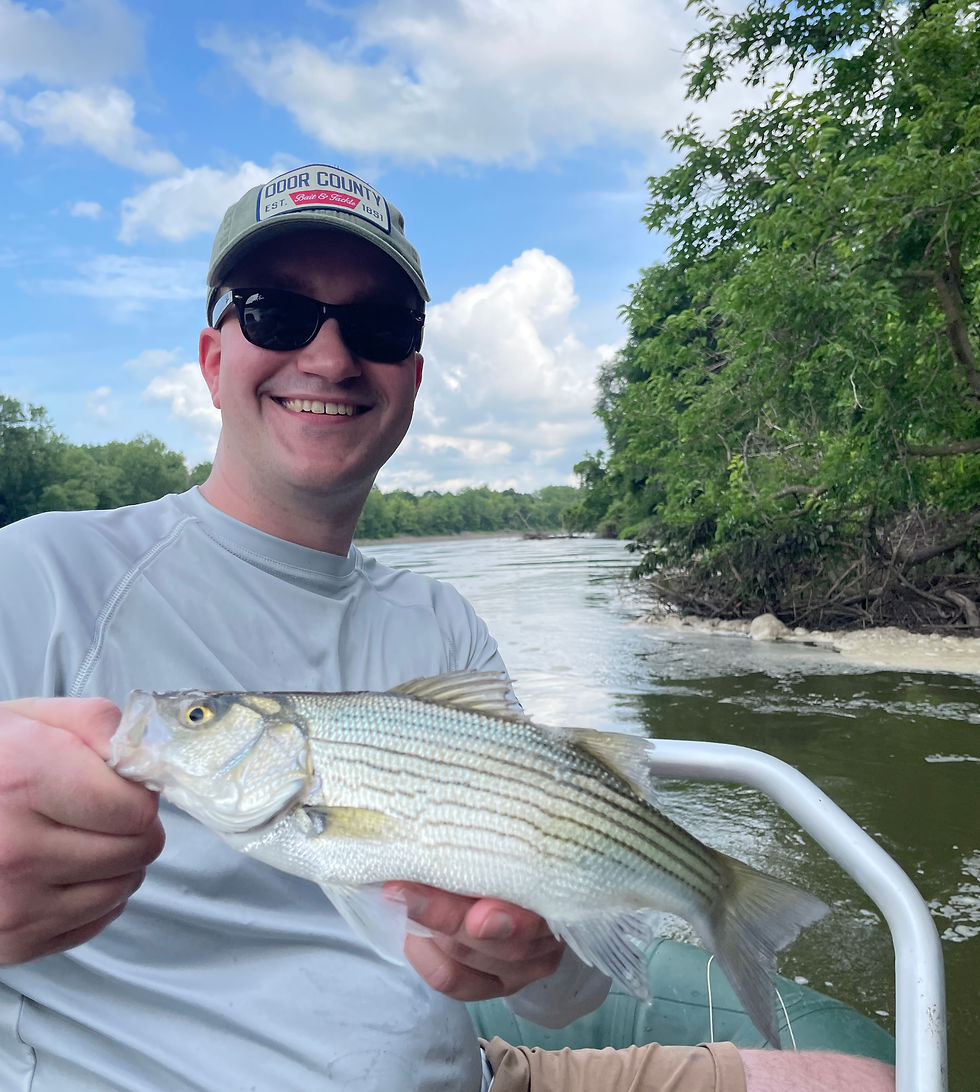
Why Carp? (Don't Bonk the Buffalo)
- Ryan Koch
- Jun 4, 2022
- 3 min read

I’m sure some see pictures of fishermen with carp and think something like: “What in the world? Why would anyone WANT to catch those?” Or, “Man, those fish are ugly!”
It is worth clarifying some of the fish in the Midwest that people call “carp” are not, in fact, carp at all.

The Bigmouth Buffalo is a fish native to Iowa waters, and can grow quite large. These fish have been known to live for over 100 years in the wild.
Bigmouth Buffalo are commonly mistaken for common carp in Iowa. I’ve made that mistake myself. Back in 2014, I grew interested in pursuing carp on the fly rod, and I found a local pond in Ankeny with what I presumed were common carp. I chased those fish for hours and hours. I studied their patterns, feeding habits, and was constantly mystified. It didn't matter if they were tailing fish (a behavior where a fish sticks it’s head down in the mud to dig with it’s mouth for food on the bottom and it’s tail sticks up in the air), cruising, or seemingly gulping microinvertebrates and surfing through the upper water column with their mouths open. Turns out, after one of my friends finally caught one, they were Bigmouth Buffalo, whose behaviors, at least in this particular pond, were very different from common carp behaviors. Many people regard Bigmouth Buffalo as “trash fish” and throw them on the bank to die. Imagine the uproar if this happened to our non-native wipers (white bass x striped bass hybrids) or our brown trout in the Driftless region.

Smallmouth Buffalo are another native Iowa fish that are prevalent in our waterways. These guys can have some gorgeous iridescent colors.

Grass carp are a non-native species that haven't been in the United states as long as common carp have, but they have been around for roughly 50 years. They were initially introduced to control plant growth, but their population increased and they are considered an invasive species. However, there are sterile versions of these grass carp that are still stocked in ponds all across the United States, including Iowa. They help reduce vegetation due to it being their main diet. Grass carp can really knock down any vegetation in a waterbody, so if you want grass carp stocked in your pond, be sure to not add too many (some ponds realistically only need one grass carp to control plant growth).
Grass carp can grow to very large sizes and are notorious for being spooky, picky eaters. Sometimes, they only eat cotton seeds. Other times, they are focused on algae. Other times, who knows what is on their mind. I read once that of all the perfect casts you make at a grass carp, only 25% of those fish will eat. In my experience, that has proven to be mostly true.

Common carp were introduced to the United States in the 1800s and after extensive stocking, it was realized that it wasn’t a good thing. It was obvious that the common carp were not going to be eradicated, unfortunately. However, in recent years, fly anglers have taken notice of the challenge of tricking a common carp into eating an artificial fly, and it has become a popular pursuit for many.

Chasing all of these fish on the fly - bigmouth and smallmouth buffalo, grass and common carp - involves significant stealth, a delicate presentation, accurate casting, and willing fish. If not all of these criteria are met, it is likely there will be a refusal or a spooked carp as a result. Take it from someone who has seen more refusals/spookages than eats in his lifetime… it is a common (albeit) painful result.

Would it be nice to have rivers and lakes be pristine, unaltered environments with only native fish in them? Absolutely. But we should be able to find enjoyment in pursuing whatever species we have left, and while we are at it, we ought to be good stewards of the landscape and waterways we still have. After we die, let’s leave our fisheries in as good of shape, if not in better shape, than we found them in. And whether we like it or not, many of those fisheries will likely still include the glorious (and arguably ugly) common carp. Don't bonk the buffalo!
Fishing Report
Click here for the Iowa DNR's Fishing Report (6/02/2022)
Saylorville/Big Creek: Crappie have begun to suspend in deeper water, but still some fish reachable from shore. We caught some in about 5-6 feet of water today.
Local Ponds: Weeds are starting to build up around the edges in many ponds. However, bluegill spawn is on, and they are very accessible in shallower water.
Des Moines River: Flows dropped this week.
-Flow (below Saylorville): 4290 cfs
-Flow (below Red Rock): 9280 cfs
Get in touch with us to book a fly fishing trip in Iowa!
~GUIDED FLY FISHING IN IOWA~
flyfishIA.com






Comments